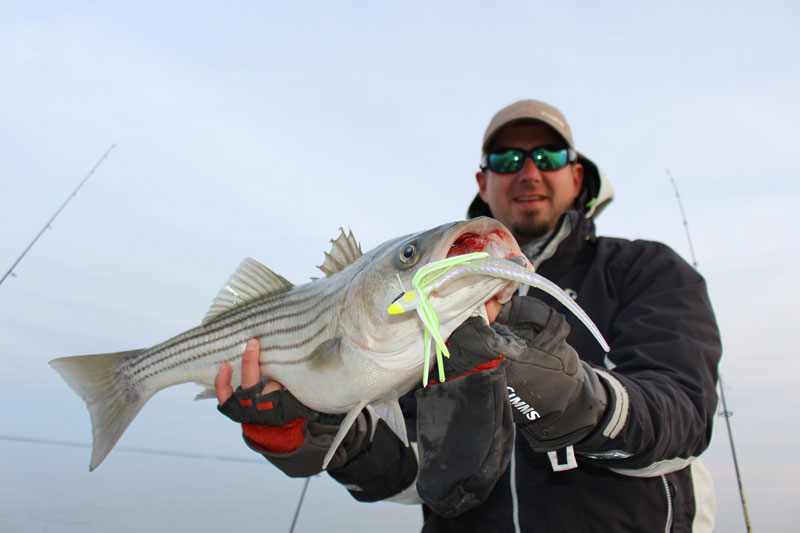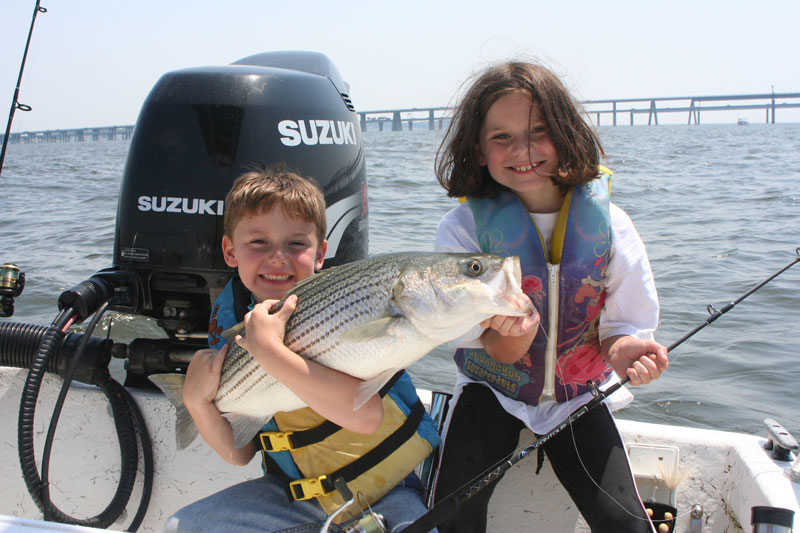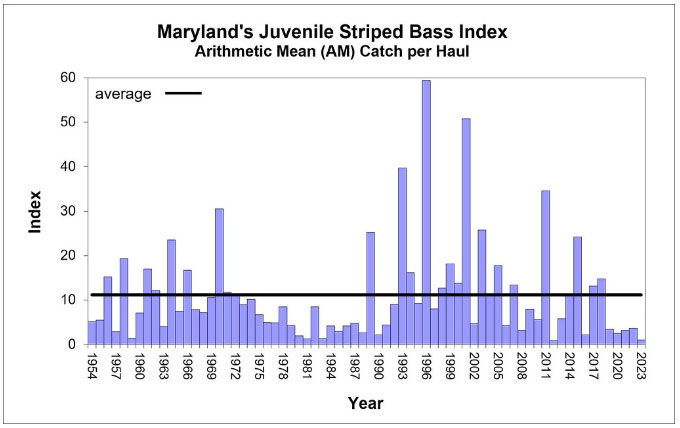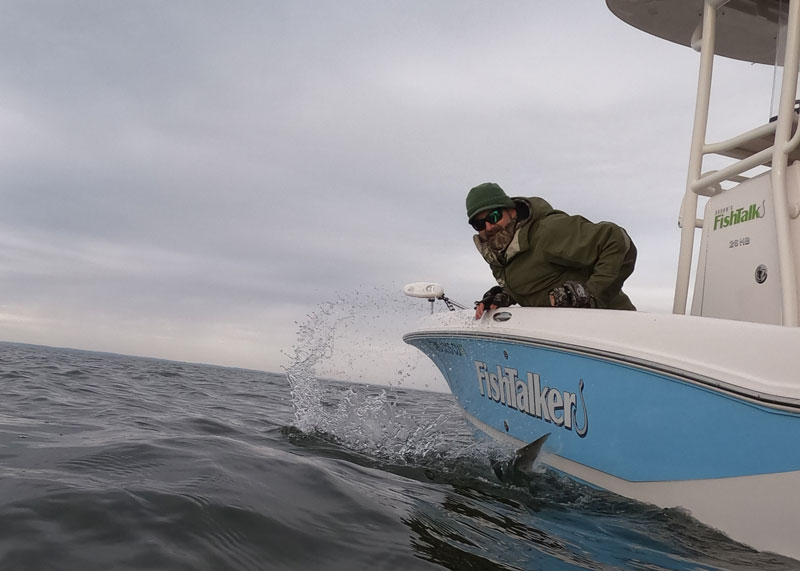Fishing for striped bass, whether you're casting soft plastic lures in the spring or trolling in late fall, is one of the most popular angling activities in our region. Rockfish, as striped bass are called on the Chesapeake Bay, can be found from Canada to Florida all along the Atlantic Coast. They were also introduced to the West Coast way back in the late 1800s and can now be found from British Columbia to Mexico.

What is a Striped Bass?
The scientific name of the striped bass is Morone saxatilis and these fish are commonly called "stripers," too. They are anadromous, meaning that they spawn in freshwater rivers in the spring, then migrate back to saltier waters. Not all stripers migrate though, some are non-migratory and are born and live their adult lives in brackish river systems. Of course, those that have been stocked in reservoirs don't migrate, either.
Stripers have seven to eight black stripes that are horizontal down their silver/white bodies. They have two dorsal fins, one with eight to 10 hard spines and the second with 10 to 13 soft rays. The anal fin has three hard spines then seven to 13 soft rays. Their meat is firm, white, and flakey, and is considered excellent at the dinner table.
Some great resources for more information about stripers can be found at NOAA’s Chesapeake Bay page on striped bass.

Striped Bass History
Since the colonists came over from England the Chesapeake Bay’s fish, specifically striped bass, have been an important source of food. The fish were commonly used for winter stores and as fertilizer for agriculture. In the late 19th century, Dr. Livingston Stone of the U.S. Fish Commission began transporting rockfish from New Jersey to the San Francisco Bay by request of the Fish Commission of California. Since then, they have thrived on the West Coast and have also been introduced into numerous freshwater reservoirs in the nation.
Most of the natural striped bass population on the eastern seaboard, usually estimated at 70 to 80 percent, spawns right here in the Chesapeake Bay. Unfortunately, in recent years these fish have suffered from extremely poor spawning success. As a result, regulations have been tightening on catching these fish year after year. See The Rocky Road for Rockfish, for the latest update on the status of the fishery.

Record Striped Bass
Surely, everyone would love to catch a new record striped bass. This will be no easy feat, however, especially since there is currently an upper size limit applied to the species. Anywhere you fish for them along the Mid-Atlantic coast, fish over 31 inches must be released. The historic record striped bass for the Mid-Atlantic states we cover include:
The all-tackle world record striped bass is an 81 pound, 14 ounce fish that was caught in 2011 in Connecticut waters.
Where and When to Find Striped Bass
The best place to try fishing for striped bass depends on the season. That said, stripers can be found throughout the Chesapeake Bay and along the Mid-Atlantic’s coastal waters at just about any time of the year. Here are some Chesapeake Bay and Coastal hotspots; click through to the links to find articles on how to go fishing for striped bass in each specific location.
In early spring, the Chesapeake Bay is catch and release only with certain areas strictly closed to all fishing where the striped bass spawn, as to not interrupt the process. Fishing then starts for parts of the open Bay, but there are still significant areas of no fishing and/or only catch and release. As the spring season progresses more and more of the Bay is open to fishing, but select areas that are classified as spawning zones remain closed to fishing until summer.

Maryland and Virginia regulate their waters individually and their seasons don’t always match up. The Potomac River, however, is shared by the two states and has its own Potomac River Fisheries Commission.
Here are Maryland’s regulations for catching rockfish. Virginia anglers will want to see Virginia’s official regulation page, and there's another striped bass fishing regulations page for Delaware.
How to Fish for Striped Bass
Fishing for striped bass can happen in many different ways and which technique you decide to use should changes with the seasons. The popular tactics also differ quite a bit from one area to another. This video will help you figure out which is best for each different season:
Here’s the basic list of techniques you can try:
-
Trolling (divided into spring trophy striper trolling, summer trolling, and light tackle trolling)
-
Chumming (divided into summer chumming and late season chumming)
Which method is working best at any given time? Stay up to date by checking out our FishTalk Fishing Reports, which are updated every Friday by noon. And check out our basic Striper Fishing page, so you’re ready to hit the water and try some striped bass fishing asap.
-By Maya Rogalski
Editor's note: This article was originally published in February of 2020 and was last updated in December of 2024.